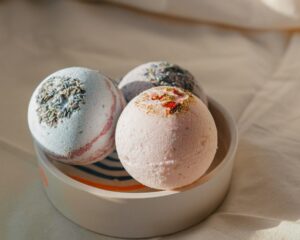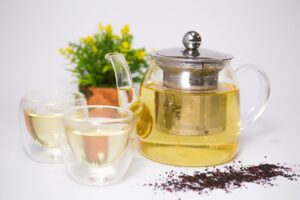Finding Balance and Comfort

Menstruation is a natural and essential part of a woman’s life. While it can come with its fair share of challenges and discomfort, it’s also an opportunity for self-care and nurturing. In recent years, there has been a growing interest in natural remedies and eco-friendly alternatives for menstrual self-care. These options not only prioritize our well-being but also contribute to a more sustainable planet. In this blog post, we will explore a range of natural remedies for menstrual self-care that are gentle, effective, and environmentally friendly.
1. Menstrual Cups: The Eco-Friendly Alternative
Menstrual cups have gained popularity as an eco-friendly alternative to disposable menstrual products. Made of medical-grade silicone or latex, these reusable cups are inserted into the vagina to collect menstrual flow. Not only do they reduce waste and minimize environmental impact, but they also offer long-lasting protection (up to 12 hours) and can be worn during physical activities such as swimming or exercising. Menstrual cups are a cost-effective option and can last for several years with proper care. By making the switch to menstrual cups, you not only nurture yourself but also contribute to a healthier planet.
2. Organic Cotton Pads and Tampons
If using a menstrual cup is not your preference, choosing organic cotton pads and tampons is another eco-friendly option. Conventional disposable pads and tampons often contain synthetic materials and chemicals that can be harsh on the skin and harmful to the environment. Opting for organic cotton products ensures that you are using materials that are free from pesticides, fragrances, and chlorine bleach. Organic cotton pads and tampons are biodegradable and gentle on the skin, providing a more natural and comfortable experience during your period.
3. Herbal Tea for Relaxation
During your menstrual cycle, you may experience discomfort, cramps, or mood swings. Herbal teas infused with ingredients like chamomile, ginger, or peppermint can help ease these symptoms and promote relaxation. Chamomile tea has calming properties that can relieve muscle tension and reduce anxiety. Ginger tea has anti-inflammatory properties that may alleviate menstrual cramps and soothe digestive issues. Peppermint tea is known for its cooling effect and can help ease bloating and discomfort. Sip on a warm cup of herbal tea during your menstrual days to not only nurture your body but also create a calming ritual for yourself.

4. Essential Oils for Comfort
Essential oils have been used for centuries for their therapeutic properties. When it comes to menstrual self-care, certain essential oils can provide relief and comfort. Lavender oil is known for its calming and soothing effects, which can help reduce stress and promote relaxation during your period. Clary sage oil has been traditionally used to alleviate menstrual cramps and hormonal imbalances. Peppermint oil can help ease muscle tension and provide a cooling sensation. When using essential oils, remember to dilute them properly with a carrier oil and apply them topically or use them in a diffuser for aromatherapy. Always perform a patch test and consult a healthcare professional if you have any concerns or sensitivities.
5. Mindful Movement and Exercise
Engaging in gentle movement and exercise can help alleviate menstrual discomfort and boost your mood. Activities like yoga, walking, or swimming can help increase blood flow, reduce cramps, and release endorphins, which are natural mood elevators. Yoga poses such as child’s pose, cat-cow, and gentle twists can specifically target menstrual discomfort and provide relief. Listen to your body and choose activities that feel good to you during your period. Remember, the goal is not to push yourself but to move in a way that nurtures and supports your well-being.
6. Nutrient-Rich Foods
Eating a balanced and nutrient-rich diet can contribute to your overall well-being and menstrual health. During your period, focus on incorporating foods that are rich in iron, magnesium, and vitamin B6. Iron-rich foods like leafy greens, beans, and lentils can help replenish iron levels and reduce fatigue. Magnesium-rich foods like bananas, dark chocolate, and nuts can help relax muscles and reduce cramps. Vitamin B6-rich foods like salmon, chickpeas, and avocados can help stabilize mood swings and reduce bloating. By nourishing your body with these nutrient-dense foods, you support healthy menstrual function and promote overall wellness.
7. Self-Care Rituals
Finally, don’t forget the power of self-care rituals during your menstrual cycle. Create a nurturing environment for yourself by indulging in activities that promote relaxation and well-being. Take a warm bath with Epsom salts and your favorite essential oils. Practice deep breathing exercises or meditation to calm your mind and reduce stress. Treat yourself to a gentle massage or use a heating pad to alleviate cramps. Surround yourself with positive affirmations and engage in activities that bring you joy and comfort, such as reading, journaling, or watching your favorite movie. These self-care rituals allow you to connect with your body, honor your menstrual cycle, and create a nurturing space for yourself.
By embracing natural remedies and eco-friendly options for menstrual self-care, you not only prioritize your own well-being but also contribute to the sustainability of our planet. Whether it’s making the switch to reusable menstrual products, incorporating herbal teas and essential oils, or engaging in mindful movement and self-care rituals, these practices allow you to nurture yourself holistically during your menstrual cycle. Embrace the power of natural remedies and create a menstrual self-care routine that is both nurturing for yourself and the environment.

